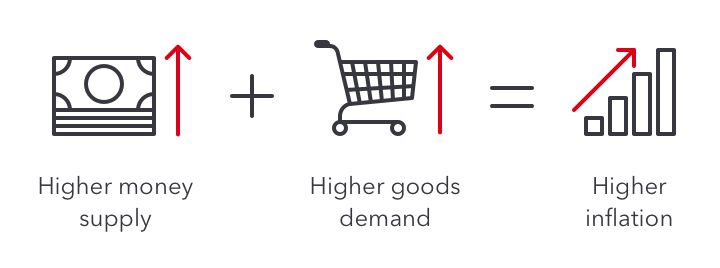Introduction: The Struggle of Living Paycheck to Paycheck
Living paycheck to paycheck is a pervasive challenge faced by countless individuals across various demographics. The constant cycle of earning just enough to cover expenses can lead to significant stress and hinder one’s ability to build wealth. According to recent studies, nearly 78% of Americans live paycheck to paycheck, illustrating that this financial struggle is not an isolated experience but a widespread dilemma impacting a large segment of the population. This reality is often exacerbated by rising living costs, student loans, and unexpected expenses, creating a precarious financial environment where savings seem out of reach.
The implications of living this way can be severe, as it can lead to feelings of anxiety and a sense of hopelessness regarding financial stability. Furthermore, the lack of an emergency fund means that individuals may resort to high-interest loans or credit cards in times of need, perpetuating a cycle of debt that is difficult to escape. This reliance on credit can swiftly transform minor setbacks into significant financial crises, further entrenching the individual in a paycheck-to-paycheck lifestyle.
Recognizing the challenges associated with this way of living is the first step towards change. In response to this widespread issue, we propose a comprehensive 30-day plan that aims to transform one’s financial habits and foster a more stable, prosperous future. By approaching the process with intentionality and dedication, individuals can break free from the constraints of their current financial status. This plan will empower individuals to take charge of their finances, establish sustainable habits, and ultimately create a solid foundation for financial independence and prosperity.
Step 1: Understanding Your Financial Situation
The first step towards breaking free from a paycheck-to-paycheck lifestyle is to conduct a thorough personal finance audit. This process begins by creating a comprehensive snapshot of your current financial status. Start by calculating your total monthly income, including all sources such as salary, bonuses, freelance work, and any other earnings. Having a clear view of your income will serve as the foundation for the rest of your financial assessment.
Next, it is crucial to list all your monthly expenses. These expenses can be categorized into fixed and variable costs. Fixed expenses include rent or mortgage payments, insurance premiums, and loan repayments, which remain relatively constant each month. Conversely, variable expenses encompass groceries, utilities, entertainment, and discretionary spending, which can fluctuate. By separating these two categories, you can better understand where your money is going each month.
After listing your income and expenses, take the time to identify areas of overspending or inefficiency. This may involve reviewing expenses that could be reduced or even eliminated. For instance, consider whether you can cut back on subscription services that are infrequently used or dining out too often. Conducting this audit not only sheds light on your financial habits but also highlights opportunities for smarter budgeting.
To assist you in this endeavor, we recommend utilizing budgeting tools that allow for tracking and managing your finances with ease. For your convenience, we offer a downloadable budgeting template that can be used to systematically organize your financial information. Engaging in this detailed assessment is a vital preliminary step, empowering you to make informed decisions and paving the way towards financial stability.
Creating a Budget That Works
Establishing a well-structured budget is a crucial step in breaking free from the cycle of living paycheck to paycheck. A practical budget not only provides a roadmap for managing your finances but also emphasizes the importance of prioritizing your spending. One popular budgeting strategy is the 50/30/20 rule, which allocates 50% of your income to essential expenses, 30% to discretionary spending, and 20% to savings and debt repayment. This framework helps individuals identify their financial priorities and encourages responsible financial behavior.
The first step in creating an effective budget is to list all your sources of income, followed by your fixed and variable expenses. Fixed expenses include rent, utilities, and loan payments, while variable expenses consist of groceries, entertainment, and dining out. By categorizing your expenses, you can gain clarity on where your money is going and identify areas for potential savings. It’s essential to consider your financial obligations and prioritize them accordingly. This might mean cutting back on non-essential items to ensure that you can meet your debt repayment and savings goals.
There are several budgeting apps and tools available that can simplify this process and help you stay on track. Popular options include Mint, YNAB (You Need A Budget), and PocketGuard, all of which allow users to monitor their income and expenses in real time while providing insights into spending patterns. By utilizing these tools, budgeting becomes less intimidating, and tracking your progress becomes more manageable. Visualization of your financial state is vital, and a well-maintained budget allows for adjustments and strategic planning as necessary.
Ultimately, creating a budget that works requires dedication and discipline. By implementing effective budgeting strategies and making use of available tools, you can take significant steps toward achieving financial stability and breaking the cycle of living paycheck to paycheck.
Boosting Your Income
Enhancing your income is a crucial step toward achieving financial stability and breaking free from the cycle of living paycheck to paycheck. There are several practical strategies you can employ to supplement your income effectively. One of the most accessible options is exploring freelancing opportunities. Websites such as Upwork, Fiverr, and Freelancer provide platforms for individuals with various skills—such as writing, graphic design, web development, or marketing—to find projects that match their expertise. These freelance gigs often allow you to set your hours and choose the projects that interest you, facilitating a flexible work-life balance.
In addition to freelancing, consider engaging in gig work. Platforms like TaskRabbit and Uber offer short-term jobs that can be a quick source of extra cash. Whether it’s delivering food, assembling furniture, or running errands, gig work can fit seamlessly into your schedule and allows you to generate supplemental income on your terms.
Another approach to increasing your financial fluidity is selling unused items. Many households are filled with items that are no longer needed, and platforms like eBay, Craigslist, and Facebook Marketplace can help you transform these possessions into cash. This not only declutters your living space but can also provide a significant boost to your funds.
For those employed, negotiating a raise with your current employer can yield positive results. Research industry standards for your role and prepare a compelling case for why your contributions warrant a salary increase. This step may seem daunting, but effective communication about your worth can lead to financial benefits.
Finally, consider part-time job opportunities that align with your schedule and interests. Retail positions, teaching assistant roles, or tutoring can provide additional income while allowing you to gain valuable experience.
Cutting Expenses Without Sacrificing Quality of Life
As individuals strive to break free from the constraints of living paycheck to paycheck, it becomes imperative to explore effective strategies for reducing expenses while maintaining a satisfactory quality of life. One of the first steps in this journey is to evaluate ongoing subscriptions. Many people find themselves subscribed to streaming services, fitness clubs, or magazine subscriptions that they rarely use. By taking the time to assess these monthly expenses, individuals can identify and cancel those that are not essential, thereby reallocating funds to more immediate needs or savings. This simple reflection can yield significant savings over time.
Another crucial area to scrutinize is grocery shopping. Many consumers may not realize how their shopping habits can impact their overall financial health. Transitioning to budget-friendly grocery shopping doesn’t necessarily mean sacrificing food quality. Utilizing meal planning can help shoppers make informed decisions, ensuring that they purchase only what is necessary and reducing food waste. Additionally, seeking out discount stores or using coupons and cashback apps can lead to considerable savings. These practices not only make grocery bills more manageable but also encourage mindful consumption of food.
Moreover, distinguishing between needs and wants can facilitate more informed spending decisions. Individuals should conduct a thorough audit of their monthly expenses to categorize them effectively. Focus on maintaining what is necessary, such as housing, utilities, and transportation, while being more discerning about discretionary spending. This practice can empower individuals to prioritize their financial well-being without sacrificing their lifestyle quality.
By applying these practical tips, individuals can significantly reduce their expenses. Cutting back does not imply living a less fulfilling life; rather, it emphasizes the importance of making informed choices that lead to long-term financial stability. Establishing a clear understanding of spending habits is a foundational tactic in this journey toward prosperity.
Building an Emergency Fund
Establishing an emergency fund is a crucial step in securing your financial future and breaking the cycle of living paycheck to paycheck. An emergency fund serves as a financial safety net, providing reassurance in times of unforeseen circumstances such as medical emergencies, job loss, or urgent home repairs. By saving a small amount consistently, you can create a buffer that can prevent debt accumulation and financial stress.
The first action to take is to set a reasonable savings goal. A good target to aim for initially is $500 to $1,000. This amount can cover most minor emergencies, allowing you to manage expenses without resorting to credit. Once this initial goal is met, you can gradually increase your savings target for larger potential emergencies, ultimately striving for three to six months’ worth of expenses.
To begin saving, it is important to automate your efforts. One effective strategy is to set up direct deposits into a separate savings account specifically designated for your emergency fund. By automating this process, you ensure that a portion of your income is consistently redirected to savings without requiring additional effort on your part. Consider starting with a small percentage of your paycheck, which can be adjusted as your financial situation improves.
Furthermore, look for opportunities to cut unnecessary expenses in your monthly budget. Even minor adjustments, such as reducing dining out or canceling unused subscriptions, can help you allocate more funds toward your emergency savings. Remember, every small contribution counts, so even if you can only save a little at first, a consistent effort will lead to significant progress over time.
In conclusion, building an emergency fund is a pivotal component in achieving financial security and transitioning from living paycheck to paycheck. With careful planning, automation, and small savings habit adjustments, you can establish a robust financial cushion that supports you in times of need.
Tackling Debt Strategically
Managing debt effectively is a critical aspect of achieving financial stability and prosperity. In Step 6, we focus on several strategic approaches for tackling debt that can significantly enhance your financial standing over the next 30 days. Two prominent methods that are often recommended are the snowball method and the avalanche method.
The snowball method involves paying off your smallest debts first, which can provide quick wins and boost motivation. By eliminating minor liabilities quickly, you create momentum that can help you tackle larger debts as you progress. This method emphasizes psychological benefits; the satisfaction of closing accounts can build confidence and foster positive financial habits.
Conversely, the avalanche method prioritizes debts based on interest rates. Under this strategy, you pay off high-interest debts first, which saves money in the long term. By reducing the total interest paid, this method may lead to a faster overall debt reduction. Both strategies have their merits, and the choice between them often depends on individual preferences and financial circumstances.
In addition to these methods, negotiating with creditors is another viable strategy. Many creditors are willing to discuss payment plans, lower interest rates, or even settlement options. By communicating openly about your circumstances, you may find that they are willing to work with you to make your debt more manageable.
Consolidating debt is also worth considering. This involves merging multiple debts into a single loan with a lower interest rate, simplifying repayments and often reducing the financial burden. A well-planned approach to debt management can aid in navigating away from the paycheck-to-paycheck cycle, allowing you to focus on building wealth and financial security.
Staying Motivated and Consistent
Embarking on a journey from living paycheck to paycheck to achieving financial stability requires determination and sustained motivation. As you navigate the 30-day plan, it is crucial to develop strategies that help maintain enthusiasm and commitment to your financial goals. Celebrating small victories is one of the most effective ways to stay engaged. For instance, once you save your first $100, take a moment to acknowledge this accomplishment. Recognizing these milestones reinforces your progress and can serve as motivation to continue working towards larger goals.
Another powerful tool for sustaining motivation is the use of visual trackers. By creating a visual representation of your financial journey—such as charts or graphs—you can easily monitor your progress over time. Placing these trackers in prominent areas of your home or workspace acts as a daily reminder of your goals and serves to inspire further action. Moreover, seeing your savings grow can create a sense of accomplishment that propels you to stay consistent in your efforts.
In addition to personal motivation techniques, consider joining communities or accountability groups focused on financial improvement. Engaging with others who share similar challenges can provide a sense of camaraderie and support. These groups may offer invaluable tips, share their success stories, and create a space where you can discuss setbacks openly, fostering a supportive environment for growth. Whether through social media platforms, local meetups, or online forums, forming connections with those who are also striving for financial freedom can be a game changer in maintaining your motivation.
By implementing these strategies—celebrating small wins, utilizing visual trackers, and connecting with support networks—you can create a robust framework that encourages consistency and keeps your financial goals in focus. This sustained motivation will be crucial as you work towards breaking free from the cycle of living paycheck to paycheck.
Real-Life Success Stories
The journey from living paycheck to paycheck to achieving financial stability is not only possible but has been achieved by many individuals who faced similar challenges. These real-life success stories serve as inspiring reminders that change is attainable with dedication and the right strategies. For instance, Sarah, a single mother of two, found herself constantly struggling to make ends meet after her divorce. She decided to take control of her finances by setting a strict budget, prioritizing her expenses, and seeking additional income through a part-time job. After 30 days of relentless effort, she managed to save a significant amount, which marked the beginning of her journey toward financial independence.
Another success story is that of Mark, a recent college graduate burdened with student loans. Initially, he felt overwhelmed by his financial situation but chose to face it head-on. Mark adopted a practical approach by tracking his spending habits and cutting unnecessary expenses. He utilized various resources, including financial coaching and mobile budgeting apps, that improved his money management skills. Within a month, Mark felt empowered and noted a substantial decrease in discretionary spending, alongside an increase in his savings, allowing him to make progress toward his debt repayment.
Moreover, Lisa, a small business owner, faced fluctuating income that often left her helpless during tough months. Understanding the importance of having an emergency fund, she focused on saving a portion of her earnings continuously. By utilizing smarter inventory management techniques and cutting overhead costs, Lisa was able to bolster her savings significantly within 30 days. This newfound financial security enabled her to invest back into her business and plan for future growth.
These stories illustrate that with determination, proper planning, and a willingness to adapt, it is possible to break free from the paycheck-to-paycheck cycle. The strategies employed by individuals like Sarah, Mark, and Lisa serve as actionable examples for those looking to improve their financial situation and embark on their own journey toward prosperity.











Leave a Reply